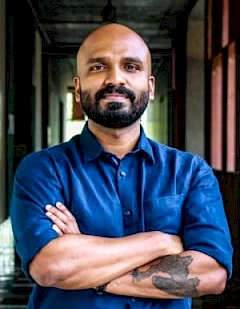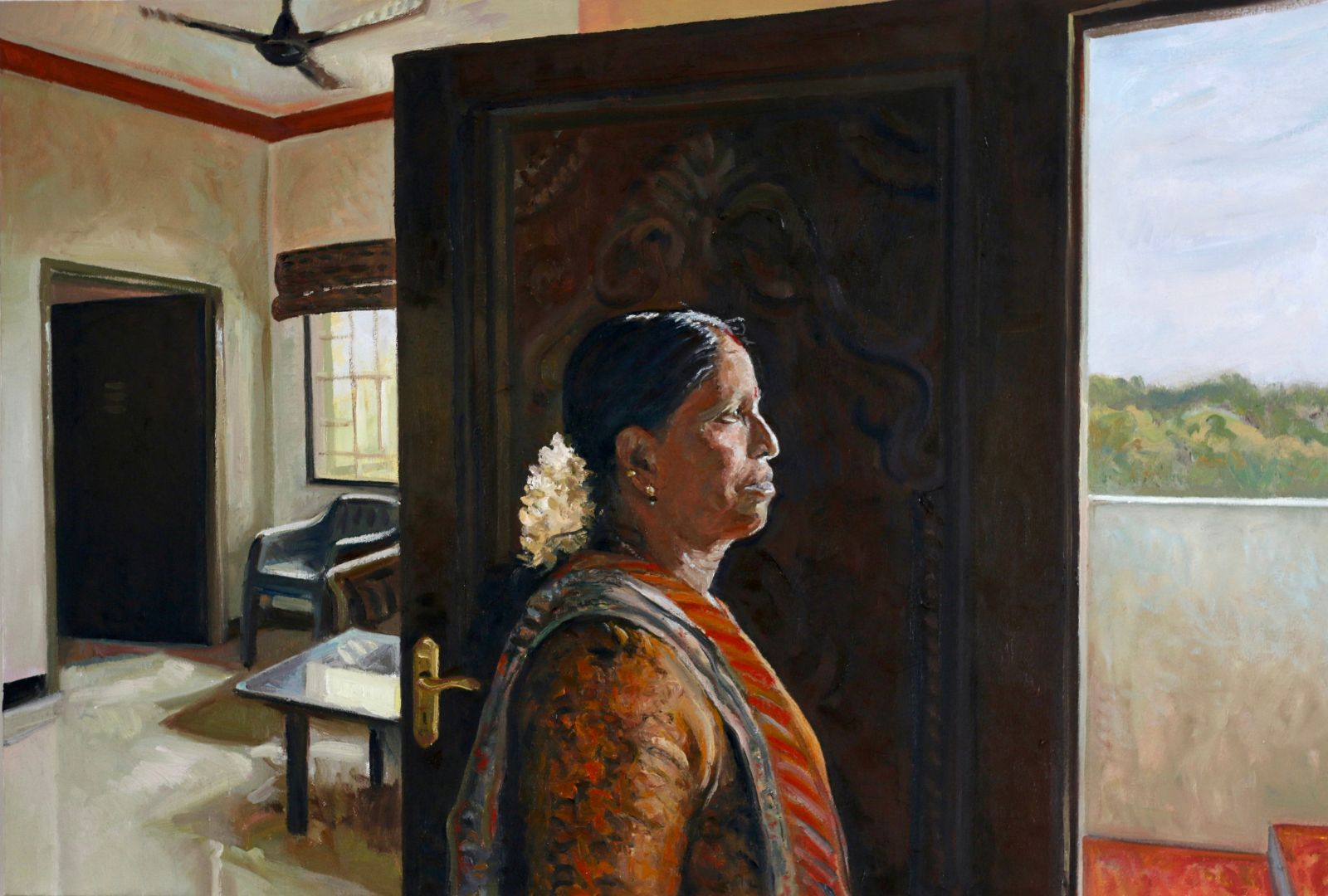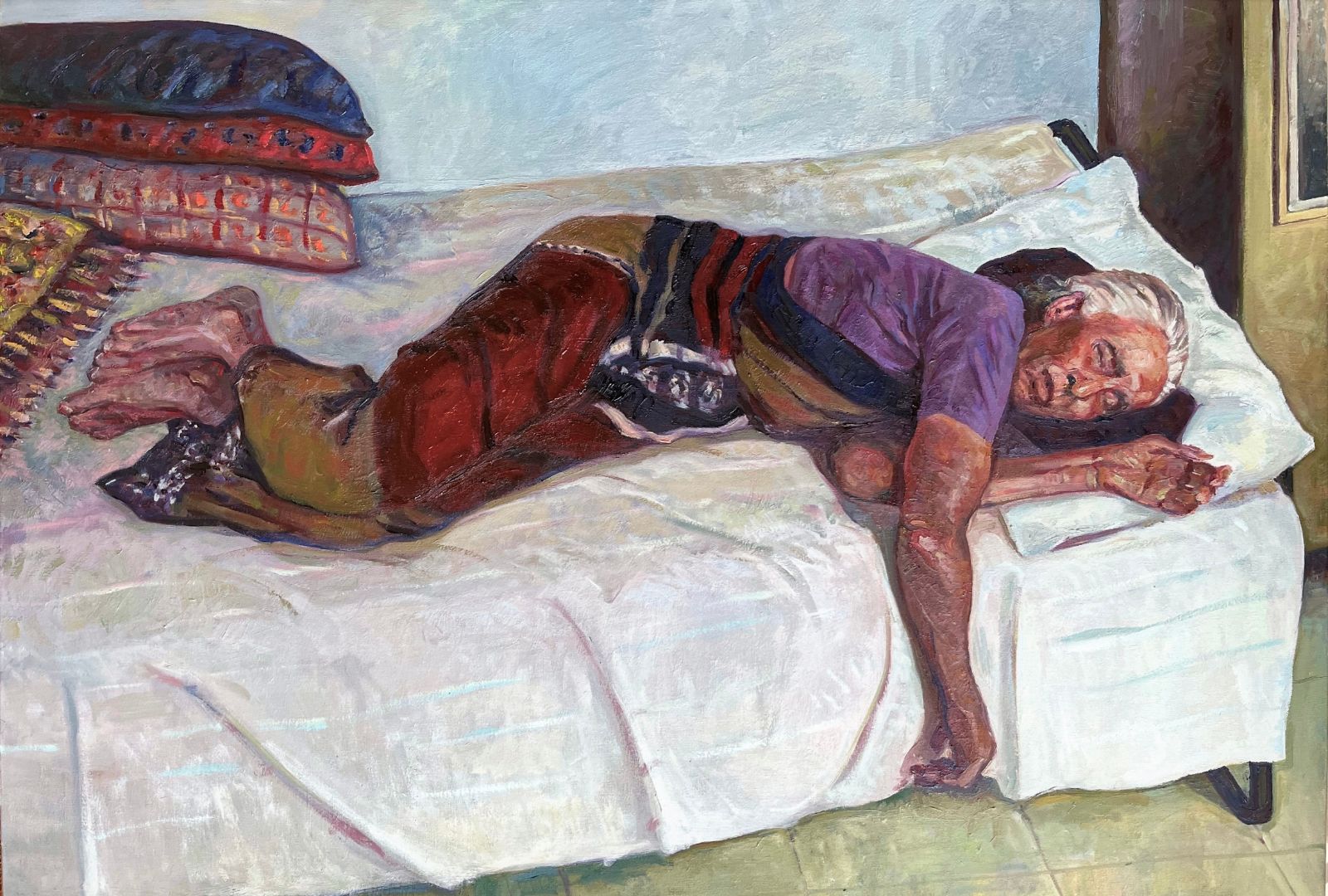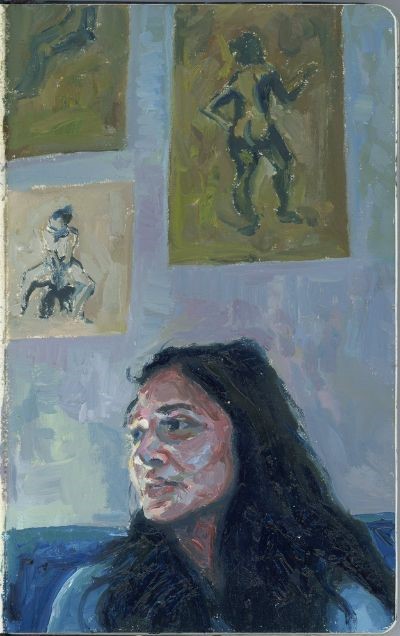Performing and Visual Arts

Rajesh Naidu
Assistant Professor
Master of Fine Arts in Studio Arts/Painting (Indiana State University)
Research Interests: representational art, observational art, visual arts, painting, human condition, figurative art, human figure, realism
Profile
Professor Rajesh Naidu is an artist and educator. He has exhibited in multiple juried, group and solo shows. He was appointed to the School of Arts and Sciences in the Performing and Visual Arts division, where he teaches courses in painting and in the history of the visual arts. These courses are open to all Ahmedabad University students. He aims to bring the benefits of observational drawing and painting into many parts of the campus, including the engineering and life sciences labs.
As a Visiting Assistant Professor of Art at the Rose-Hulman Institute of Technology (Indiana, USA), Rajesh Naidu conducted Painting, Art History, and Art Appreciation courses. He was also the Artist-in-Residence at the Institute. He received a Master of Fine Arts in Studio Arts/Painting from Indiana State University, during which he was an Instructor for Beginning and Intermediate Level Drawing courses, and held a Graduate Assistantship scholarship. He began his academic career with a Bachelor of Engineering degree in Civil Engineering from the Savitribai Phule Pune University, following which he worked in the construction industry.
Creative Research
As an artist, Professor Naidu’s primary research focus is the study of the human condition and individual identity through representational painting aided by the history of art. While his early works were inspired by Bikash Bhattacharjee’s ‘Durga’ series, and Picasso’s Blue Period paintings and seminal artwork Guernica, the inquiry into the human condition became more prominent with a series of seven paintings representing people in their unguarded moment, in their private spaces. Creative research for this series included studying works by the artists Lucian Freud, Alice Neel, and Edward Hopper.
Subsequently, as the Artist-in-Residence at the Rose-Hulman Institute of Technology, he explored the idea of spaces, man-made structures and their juxtaposition with the environment, deeply influenced by Edward Hopper’s subjects that often evoked isolation and self-reflection even with the absence of a human figure in the paintings. His series of paintings focussing on cityscape and landscape was a direct result of this research. These were painted directly from observation over multiple sessions and multiple visits to places of interest, essentially capturing a 'span' of time rather than an 'instant'. Most recently, the lockdown induced by the global pandemic resulted in a series of small paintings focussing on mundane, everyday objects that one finds in their immediate surroundings.
Most recently, he is exploring traditional representational painting in the contemporary setting, and finding its niche in current India while embracing its ethos and unravelling its multicultural aspects. His work is largely derived from his experiences and observation of people, places, and sometimes commonplace objects, not necessarily following a quintessential theme. He continues to make art as a form of inquiry that is directed inward as much it is outward, making a humble effort to find an answer to the age-old question — what is art?
Select Artwork

Langoor on a Fence, Acrylic on Paper

Uma Aunty with Jasmine in Hair, Oil on Canvas

Rickshaw Wala, Oil on Paper

Avva’s Afternoon Nap, Oil on Canvas

Divya, Oil on Paper

Portrait of an Artist (Nejal), Oil on Paper
